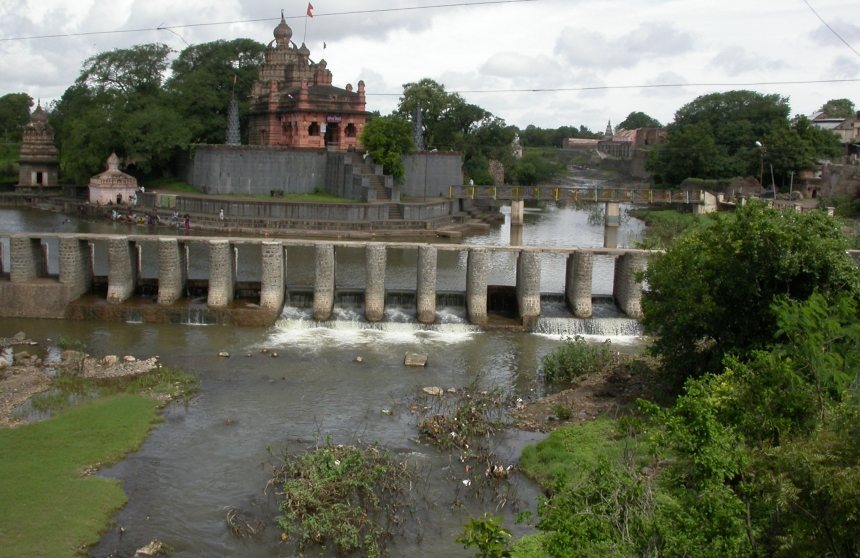
| On Sunday, 24th July 2005, my wife Amita, my sons: Aniruddh, Ajinkya and I set out to visit the Venkateshwara Temple at Ketkawale, Shrikshetra Narayanpur, Purandar fort and Saswad. |
Saswad is a taluka town 33 km south of Pune at the foothills of the
Fort Purandar, and 30 kms from the last stretch of the Dive Ghat.
According to Babasaheb Purandare, the great narrator of the grand
Maratha saga, “every inch of Saswad soil has a chapter of
history written on it!”
As we entered Saswad at about 10:40 we passed by the Sangameshwar
temple on the confluence of the rivers, Karhe and Chambli.
The
Sangameshwar temple has Yadav era sculptures.

Inside Saswad was this impressive wada fortress, not unlike a small Shaniwar Wada. It was locked.
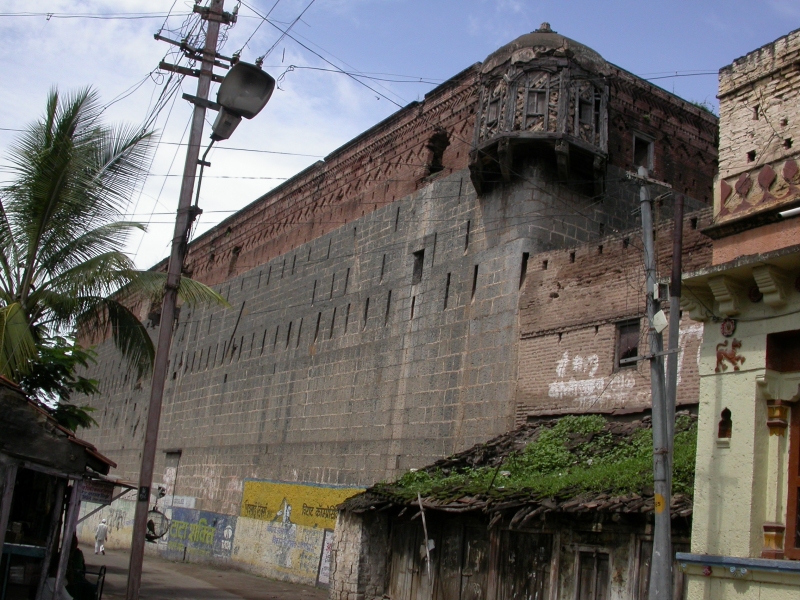 |
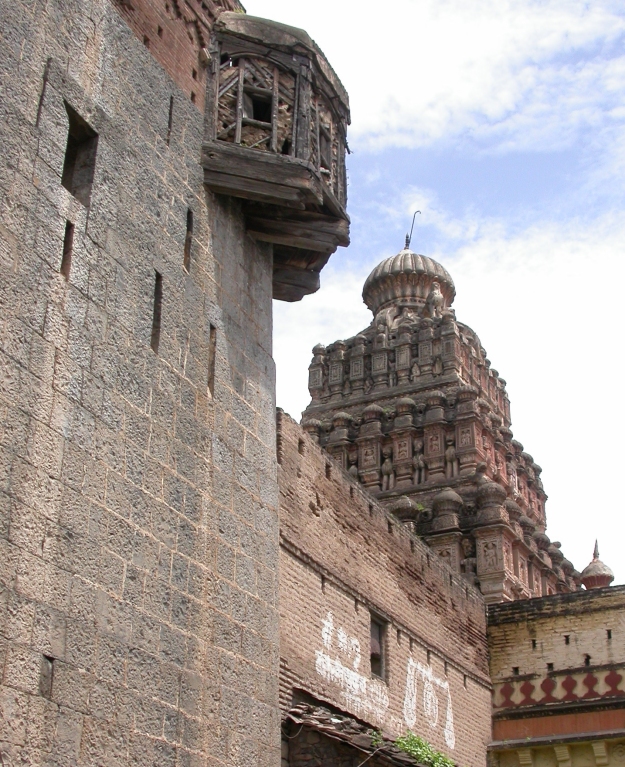 |
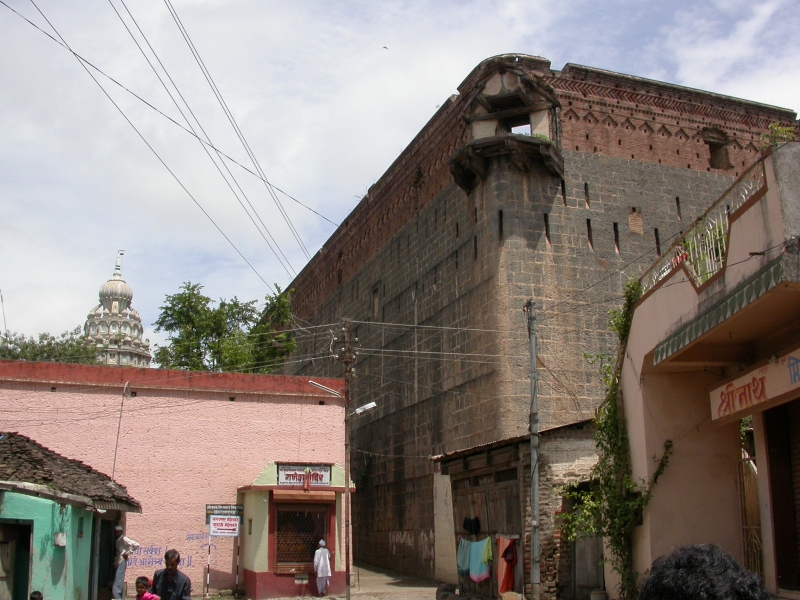
Locals sitting in the shade of the massive doorway said it belonged to Sardar Jai Purandare.
Some asking around revealed the following:
The Purandare Wada is Maharashtra's oldest standing structure.
Ambaji
Purandare, a deewan of the Peshwas, Balaji Vishwanath and Bajirao I,
built this imposing and grand residence (Wada), supposedly in 1710.
Intricate wooden carvings and wall frescos are said to still adorn this magnificent Wada.
Attached to it was an ancient Ganesh temple.

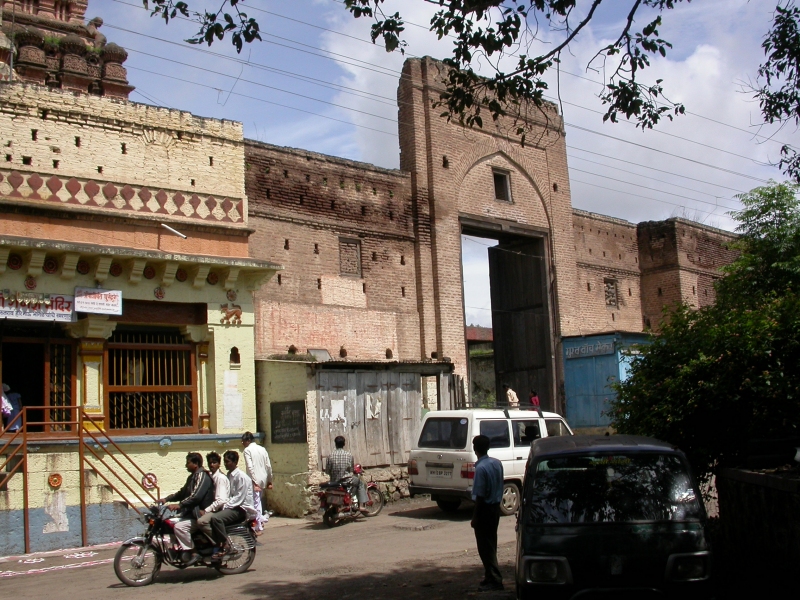
North of the Ganesh Temple, along the eastern wall was the entrance to the Purandare Wada compound (behind our white Toyota Qualis).
The brickwork of the wada was reasonably intact. Some places even had ancient plaster intact.
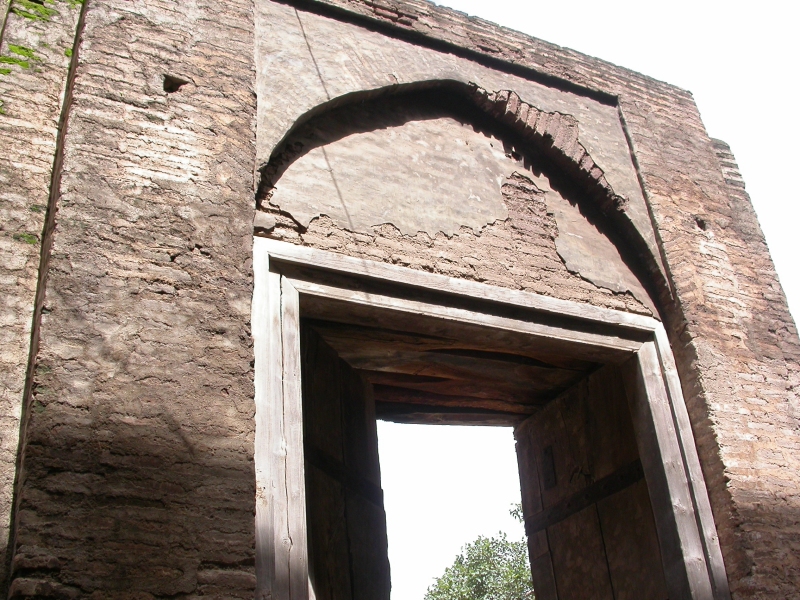
It gave us an insight into how the Shaniwar Wada (today a gutted ruin since 1828 AD) might have looked.
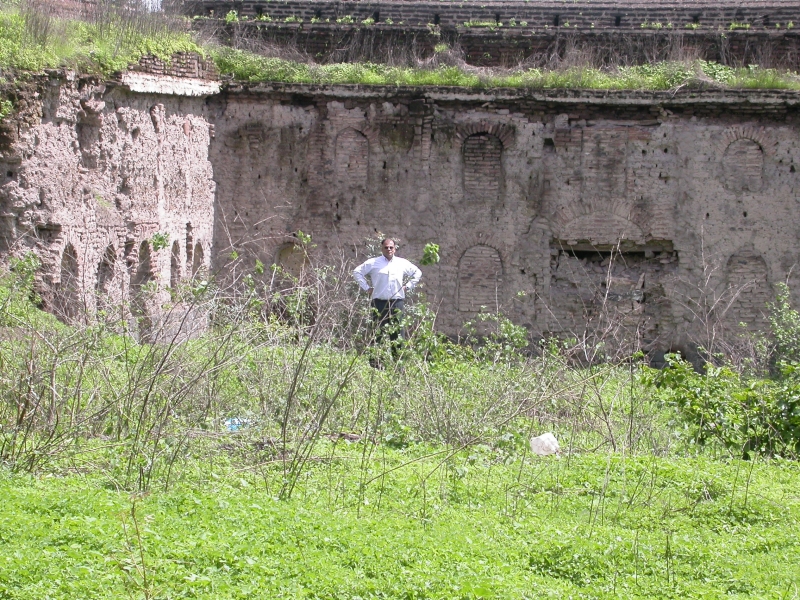
The Purandare wada like the Shaniwar wada, had a smaller yet strongly built gatehouse. The gatehouse had giant doors with sharp steel spikes and steel strips bolted with sharpened cone head steel bolts. The keep bastions flanking the gatehouse as well as most of the outer wall had arrow-loops and machicolation chutes to pour hot liquid onto offending raiders. In fact, it was easy to imagine that the Shaniwar Wada and Purandare Wada might have had the same designers and construction workers.
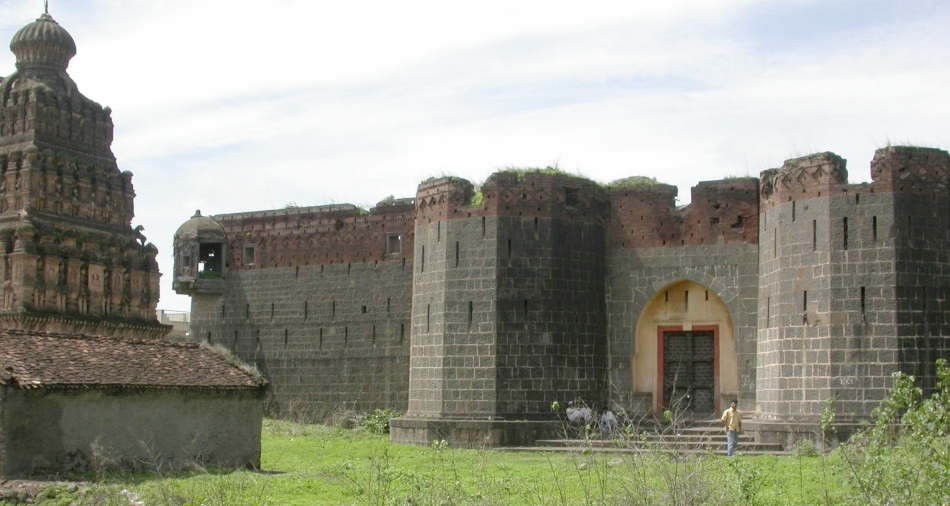
On the way back we took the Dive Ghat to Hadapsar and Pune. At the bottom of the Dive Ghat was a partly filled lake. A government board proclaimed it as Ahilyabai Holkar Talav. However the locals all know it as the Mastani lake. Legend has it that Mastani, the beautiful and brave consort of Bajirao Peshwa, one of India’s greatest generals, often frequented the place for a leisurely bath.
|
Other places in the Saswad area, I plan to visit:
|